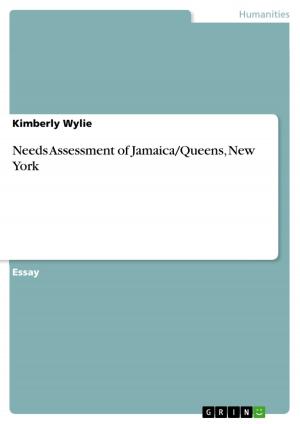Body Image in 'Emily of New Moon' with Reference to the Stages of her Cognitive and Physical Development in Middle Childhood and Early Adolescence (9-13 Years)
Fiction & Literature, Literary Theory & Criticism, British| Author: | Maria Fernkorn | ISBN: | 9783638503839 |
| Publisher: | GRIN Publishing | Publication: | May 23, 2006 |
| Imprint: | GRIN Publishing | Language: | English |
| Author: | Maria Fernkorn |
| ISBN: | 9783638503839 |
| Publisher: | GRIN Publishing |
| Publication: | May 23, 2006 |
| Imprint: | GRIN Publishing |
| Language: | English |
Seminar paper from the year 2001 in the subject English Language and Literature Studies - Literature, grade: 1,3, http://www.uni-jena.de/, 6 entries in the bibliography, language: English, abstract: ''Oh, I must write, Aunt Elisabeth,' said Emily gravely, folding her slender, beautiful hands on the table and looking straight into Aunt Elisabeth's angry face [...] 'You see, it's this way. It is in me. I can't help it. And Father said I was always to keep on writing. He said I would be famous some day.'' (306)1 These sentences are taken from Lucy Maud Montgomery's most autobiographical novel Emily of New Moon (1923) which is set in Prince Edward Island in Canada. The book draws a picture of a child who has lost her father and therefore is forced to get along with her New Moon kinship, who cares for her from that time on. It is no wonder that conflicts are preprogrammed between Emily, the young author who urges for freedom, and the conventional Blair Water people, especially Aunt Elisabeth, who is integrated in the social constrains of her time. Like Maud, as Montgomery was called, Emily nevertheless makes her way in the Victorian society in the beginning of the twentieth century and looks forward to a successful writing career at the end of the novel. The aim of this paper is to trace Emily's relation to her developing body in this first part of the Emily-trilogy, that is in the age from nine to thirteen. Furthermore, it is important to look at other people's behaviour according to Emily's own body image, which is a symbol for and immediately linked to the limitation of freedom the girl experiences in many different areas of the puritan society she lives in. To illustrate this connection, the main part of this paper deals with a chronological analysis of the different stages of Emily's cognitive as well as physical development in middle childhood and adolescence and the reactions on it from her own and society's point of view.
Seminar paper from the year 2001 in the subject English Language and Literature Studies - Literature, grade: 1,3, http://www.uni-jena.de/, 6 entries in the bibliography, language: English, abstract: ''Oh, I must write, Aunt Elisabeth,' said Emily gravely, folding her slender, beautiful hands on the table and looking straight into Aunt Elisabeth's angry face [...] 'You see, it's this way. It is in me. I can't help it. And Father said I was always to keep on writing. He said I would be famous some day.'' (306)1 These sentences are taken from Lucy Maud Montgomery's most autobiographical novel Emily of New Moon (1923) which is set in Prince Edward Island in Canada. The book draws a picture of a child who has lost her father and therefore is forced to get along with her New Moon kinship, who cares for her from that time on. It is no wonder that conflicts are preprogrammed between Emily, the young author who urges for freedom, and the conventional Blair Water people, especially Aunt Elisabeth, who is integrated in the social constrains of her time. Like Maud, as Montgomery was called, Emily nevertheless makes her way in the Victorian society in the beginning of the twentieth century and looks forward to a successful writing career at the end of the novel. The aim of this paper is to trace Emily's relation to her developing body in this first part of the Emily-trilogy, that is in the age from nine to thirteen. Furthermore, it is important to look at other people's behaviour according to Emily's own body image, which is a symbol for and immediately linked to the limitation of freedom the girl experiences in many different areas of the puritan society she lives in. To illustrate this connection, the main part of this paper deals with a chronological analysis of the different stages of Emily's cognitive as well as physical development in middle childhood and adolescence and the reactions on it from her own and society's point of view.















